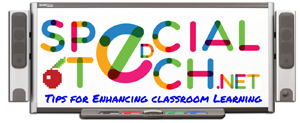by Kate Fanelli
Math Accessibility Specialist, Alt+Shift
Under most circumstances, I would never send people to a lengthy list of annotated links to look for resources. They’re long. It’s overwhelming. Readers are left wondering which of the hundreds of resources anyone would actually recommend.
Despite that, I am directing you to Glenda’s Assistive Technology Information and More blog post called “Math, math, and more math.”
Why is this extremely long list of annotated links to resources an exception to my nearly unbroken rule? First, I am familiar with many (but not all) of the resources on this list and find them to be pedagogically sound and potentially helpful. Second, the readership of this newsletter is as diverse as our students in terms of abilities and needs, and a comprehensive list of resources may be just as helpful as a more focused recommendation.
Assistive technology (AT) enables students to accomplish tasks that they would not be able to do without the technology. While educational technology does not usually come with a special education connotation, at their best AT and ed tech both allow students to do a variety of things like learn, express themselves, collaborate, stay organized, approach a task, communicate, read, write, and do mathematics that they would not be able to do in the same without the help of technology.
What are the barriers to your students’ learning? AT, as listed in this post, may address some of those barriers.
In the professional learning course Enhancing Mathematics Instruction for Students with Learning Difficulties, developed at the Education Development Center in Boston, barriers to learning are defined as existing outside of the student. That is, barriers are elements of instruction, or the classroom environment, that prevent students from accessing the content.
If a student struggles with reading, the barrier to a lesson would NOT be that he cannot read, but rather the fact reading is required to complete the lesson. in a math lesson, if a student has to read from a glossary, website, or text book page, the text on the page would be the barrier.
If a student’s motor control prevents her from operating a pencil or keyboard, and the assignment requires her to “show her work,” the barrier is NOT that the student cannot write. The barrier is the pencil and keyboard requirement.
If a student has not been able to memorize his math facts, and is struggling to complete lengthy math problems because calculating those facts with accuracy is challenging, the barrier is NOT that the student did not learn his math facts. It is the need to use those facts to complete the more complex math objective of the lesson.
Are there technology solutions, both low and high tech, that could address these, or many other, barriers?
I invite you to consider the barriers to learning that may be in place in your math lessons, and then peruse this list to see if an appropriate strategy or tool may be out there that could make all the difference for you and your students.
Follow (Mi)2 on Facebook (www.facebook.com/mi2.page) and/or Alt+Shift on Twitter (@AltShiftEd). Contact Kate at kate.fanelli@AltShift.education.

